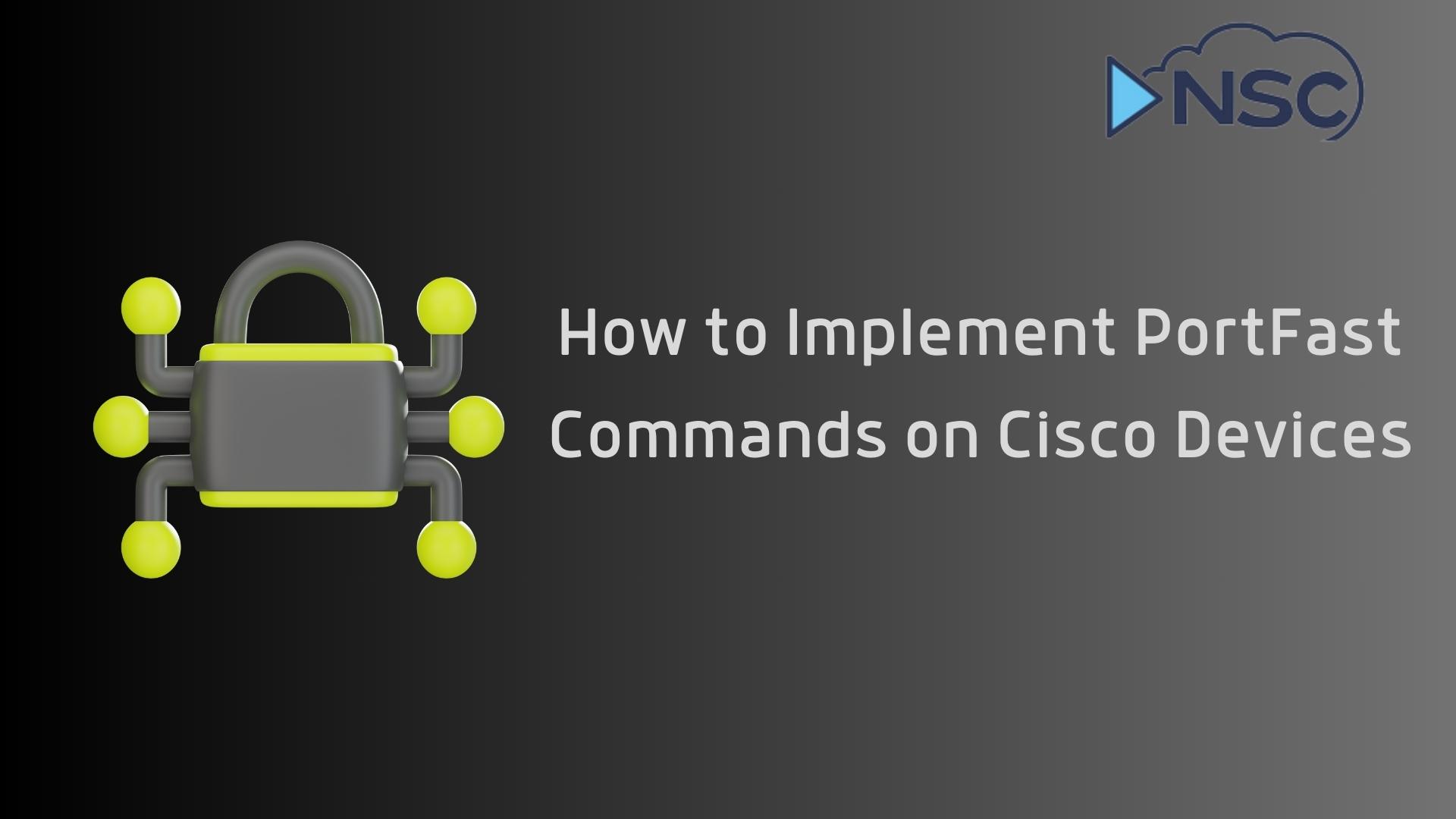In modern network environments, rapid configuration and deployment of devices are crucial for maintaining business continuity and efficient operations.
One of the technologies that facilitate this is PortFast, a network feature provided by Cisco that enhances the interaction with the Spanning Tree Protocol (STP).
This blogpost delves into the specifics of configuring PortFast on Cisco devices, covering both edge and trunk links. We will also explore best practices to ensure a robust and secure network configuration.
PortFast helps in significantly reducing the time it takes for devices connected to a switch port to start forwarding packets by bypassing the standard listening and learning states of STP.
Understanding PortFast
For network engineers aiming to reduce network convergence times, implementing Spanning Tree PortFast is a key strategy. Our guide explains how PortFast accelerates the connection process for devices directly attached to switches, bypassing the initial delay typically caused by spanning tree calculations.
Additionally, the Wireshark for Network Engineers course offers comprehensive training on using Wireshark, an indispensable tool for network troubleshooting and security assessments.
However, caution is required: PortFast should not be used on switch-to-switch connections or any ports where network loops might occur as it could lead to stability issues. It's designed for scenarios where only a single network device is connected to a port.
Configuring PortFast on Cisco Devices
Global Configuration
To enable PortFast globally across all eligible switch ports, the command spanning-tree portfast default is used. This command applies the PortFast feature to all non-trunking ports on the switch, allowing them to transition directly to the forwarding state bypassing the usual STP states.
Interface-Specific Configuration
For more precise control, PortFast can be enabled on individual interfaces using the command:
interface spanning-tree portfast
This command should be applied to access ports that connect end devices like computers or printers.
Advanced Considerations
Trunk Links
While it is less common, PortFast can also be enabled on trunk ports if necessary, using the command spanning-tree portfast trunk. This might be used in scenarios where servers with multiple VLANs need to bypass STP delays. However, extreme caution should be exercised to avoid creating potential loops that can disrupt the entire network.
BPDU Guard Integration
To protect the network when using PortFast, BPDU Guard should also be enabled. This feature automatically disables a port that receives a Bridge Protocol Data Unit (BPDU), which are data messages exchanged by switches to maintain the STP topology. Enabling BPDU Guard helps prevent accidental configuration errors that could result in network loops:
interface spanning-tree bpduguard enable
This safeguard is essential when PortFast is used, as it helps maintain network stability by ensuring that PortFast-enabled ports remain loop-free.

Best Practices and Common Pitfalls
When implementing PortFast on Cisco devices, it is essential to adhere to several best practices to ensure the network remains secure and efficient. Here are some key recommendations and common pitfalls to avoid.
For network professionals eager to further enhance their skills, particularly in network security and traffic analysis, consider exploring additional resources offered our course on Cisco ASA Firewall 9.x by Ahmad dives deep into configuring and managing Cisco ASA Firewalls
Best Practices
- Enable on Appropriate Ports: Only enable PortFast on ports connected to end devices such as workstations, servers, or printers. These ports are less likely to contribute to a bridging loop.
- Combine with BPDU Guard: Always use BPDU Guard in conjunction with PortFast. This setup ensures that if a PortFast-enabled port receives a BPDU, it will be shut down automatically, thus preventing potential loops and promoting a stable network environment.
- Regular Configuration Audits: Periodically review and audit the network configuration. This practice helps detect any misconfigurations or changes that might compromise the network’s stability.
- Documentation and Labeling: Clearly document and label all ports where PortFast and BPDU Guard are enabled. This helps in maintaining clarity for future troubleshooting and network adjustments.
Common Pitfalls
- Misconfiguration: Applying PortFast to trunk links without proper understanding or controls can lead to serious network issues, including loops. Ensure that any use of spanning-tree portfast trunk is critically evaluated and monitored.
- Overlooking Security Risks: Failing to implement BPDU Guard with PortFast can leave the network vulnerable to accidental or malicious topology changes. Always ensure both features are configured to protect the network integrity.
- Neglecting Regular Updates and Patches: Not keeping the network devices updated can expose them to vulnerabilities. Regular updates help in maintaining optimal performance and security.
Practical Examples
To provide practical guidance, here are some examples of how to configure PortFast and BPDU Guard on a Cisco switch:
Example 1: Configuring PortFast on an Access Port
interface FastEthernet0/1 description Connects to Server switchport mode access spanning-tree portfast
This configuration applies PortFast directly to an access port that connects to a server, ensuring quick connectivity upon startup.
Example 2: Enabling BPDU Guard on the Same Port
interface FastEthernet0/1 spanning-tree bpduguard enable
After enabling PortFast, BPDU Guard is added to the same port to enhance security, automatically disabling the port if a BPDU is received, which could indicate an improper connection that might cause a loop.
Summary
Implementing PortFast correctly on Cisco devices is pivotal for enhancing network performance and reducing connectivity delays for attached devices such as servers and workstations.
By bypassing the standard listening and learning states of STP, PortFast allows for immediate transition to forwarding packets, which is critical in dynamic network environments where quick access is a necessity.
However, it is crucial to follow best practices, such as enabling BPDU Guard to prevent potential loops and ensuring regular network configuration audits to maintain the health and security of the network.


